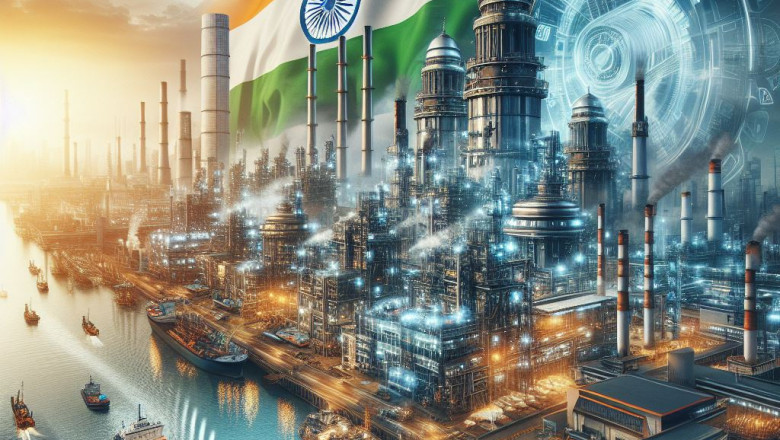
views
India, with its vast population, growing economy, and expanding manufacturing sector, is emerging as a potential global industrial powerhouse. However, the country faces several challenges in realizing its full potential and competing with current industrial powers. In this article, we will explore the opportunities and challenges that India faces in its path to becoming an industrial power.
Opportunities:
- Vast Population and Youthful Workforce: India has a population of over 1.3 billion people, with more than 65% under the age of 35. This vast and rapidly growing youthful workforce can be leveraged to drive the growth of the country's manufacturing and industrial sectors.
- Economic Growth: India is one of the fastest-growing economies in the world, with a projected GDP growth rate of over 7% in the coming years. This economic growth provides a favorable environment for investment and the growth of the industrial sector.
- Government Initiatives: The Indian government has launched several initiatives, such as "Make in India" and "Digital India," to promote the growth of the manufacturing and industrial sectors. These initiatives aim to attract investment, improve infrastructure, and promote innovation.
- Growing Domestic Demand: With the growth of the middle class and increasing disposable income, domestic demand for goods and services is rising in India. This growing domestic demand can support the growth of the country's industrial sector.
Challenges:
- Inadequate Infrastructure: India suffers from inadequate infrastructure, such as roads, railways, and ports, which hinder the growth of the industrial sector. Improving infrastructure is essential to promote industrial growth and attract investment.
- Lack of Skills: Despite the vast workforce, India suffers from a skills shortage, particularly in the manufacturing sector. Investment in training and education is necessary to develop the skills required to compete globally.
- Complex Business Environment: India is known for its complex business environment, with regulations and bureaucratic procedures that can discourage investment. The government must simplify procedures and create a favorable business environment to promote industrial growth.
- Dependence on Imports: India is heavily dependent on imports for raw materials, components, and technology. This dependence on imports hinders the growth of the industrial sector and increases the country's vulnerability to global price fluctuations.
India has the potential to become a global industrial power, with its vast population, youthful workforce, and economic growth. However, the country faces several challenges, such as inadequate infrastructure, a lack of skills, and a complex business environment. By addressing these challenges and implementing favorable policies, India can realize its full potential and compete with current global industrial powers.




















Comments
0 comment